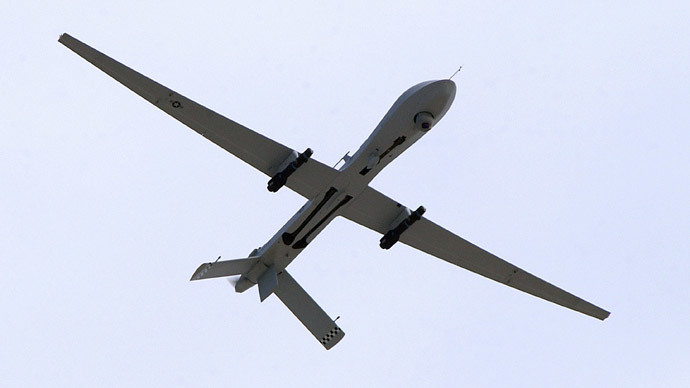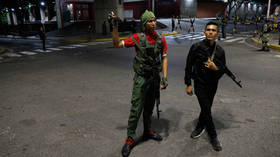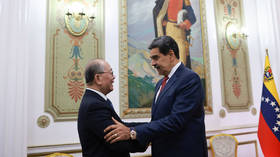Cloak of Invisibility? Al-Qaeda adapting to avoid US drone attacks

Al-Qaeda in the Arabian Peninsula (AQAP) has produced a video to teach fighters how to avoid detection by US Predator drones by making them invisible to the spy planes with a Harry Potter-style cloak.
The 16-minute video, called 'Combatting Spy Airplanes,' is slapped together and makes use of US military public relations videos – many of which are on open display in the media – to make its point, the Washington Times reports.
The video explains that a homemade shield or cloak can stop a Predator’s infrared cameras from detecting a human’s heat signature.
The makings of the heat shield resemble craft-time in a primary school classroom. First of all, a body-sized tarpaulin is spread out on the floor and smeared with glue. Then some aluminum foil, which anyone can buy in a supermarket, is pressed on. Add more glue and another tarpaulin to make a kind of aluminum foil body burger.
“The aluminum is supposed to act like a heat barrier, keeping the fighter’s body heat from being detected by the drone camera system,” according to an analysis by the Middle East Media Research Institute.
Whether this aluminum sandwich actually works or not is unclear, but the idea is simple enough: if the drone can’t see you, then it can’t blow you to bits with one of its Hellfire missiles.
READ MORE: Yemeni al-Qaeda threatens execution of US journalist in 3 days
The insulation can be converted to offer day protection by painting it with camouflage colors, or by adding tree branches, and can be folded up to be easily carried.

A spokesman for US Central Command, which runs military operations on the Arabian Peninsula, told the Washington Times that he could not discuss the “effectiveness or ineffectiveness of specific enemy [tactics].”
Drone strikes have been ongoing in Yemen for 13 years, and the jury is still out on how effective they are.
A number of high ranking Al-Qaeda leaders have been taken out by drones. In November 2002, a CIA Predator drone took out Ali Qaed Senyan al-Harthi and five of his comrades by tracking their mobile phone signals. In September 2011, a Hellfire missile killed Anwar al-Awlaki, a charismatic US-born cleric.
READ MORE: Al-Qaeda escapes US Special Forces raid in Yemen with British, American hostages
Obama has stepped up drone attacks in Yemen, with more strikes issued in the last few years than throughout the 2000s, as AQAP tries to duplicate the success of its terrorist colleagues in Pakistan.
But some analysts doubt that drone strikes have been effective in eliminating AQAP in Yemen, as they are still making significant gains against Yemen’s own hard-pressed security forces.
There is also the problem of the collateral damage that drone strikes cause. Data collected by the Bureau of Investigative Journalism and released in November 2014 showed that drone strikes against terrorists in Afghanistan, Pakistan, Somalia, and Yemen over the past ten years have killed 1,147 people – most of them civilians, including children.












